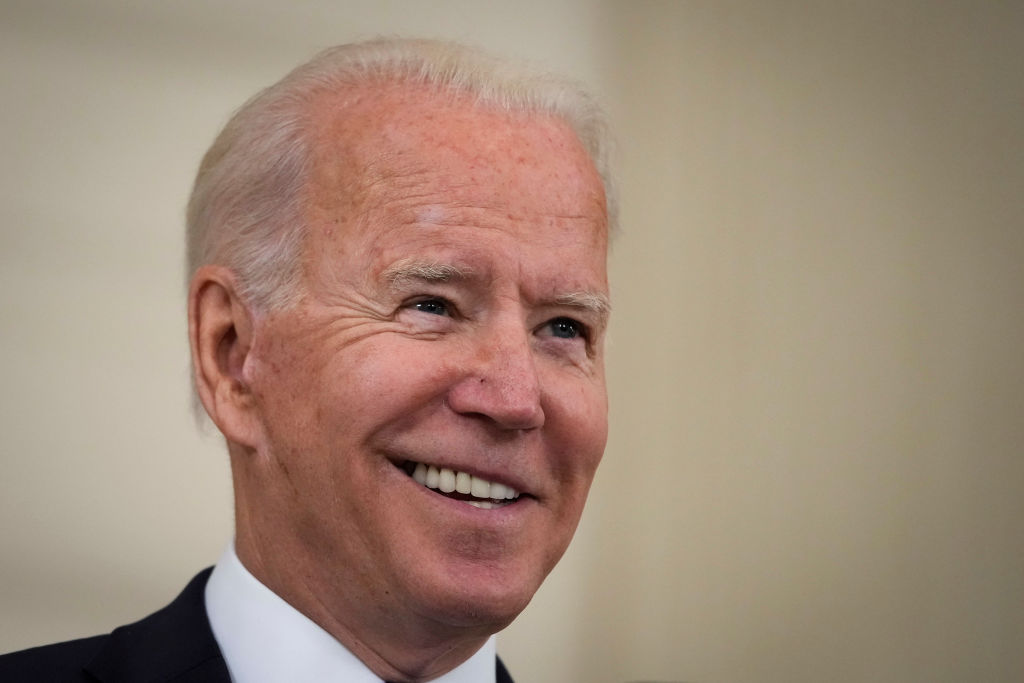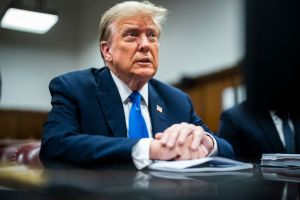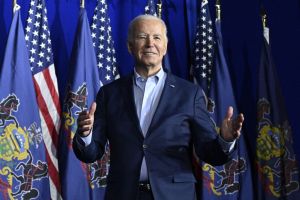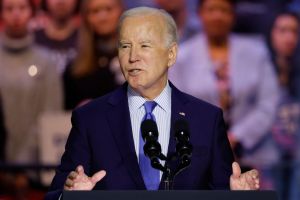Breaking news from off the wires this morning. Apparently the guy who almost punched out a Detroit factory worker on the campaign trail may not be our most adept of presidents. That Joe Biden’s administration is flailing has suddenly dawned on our establishment as though a miraculous epiphany. Think a kind of political Fatima, only instead of the sun moving across the sky it’s just that TikTok influencer with the long nails prancing about the clear blue.
How bad has it gotten for the White House? Even Chuck Todd thinks Biden has a ‘pretty big credibility crisis on his hands.’ And Chuck Todd once let Dr Fauci interview him.
The abruptness of this realization does seem weird. This is the same Biden who once declared that Dunkin’ Donuts was a no-go zone for native-born English speakers; it was always within the realm of possibility that he was not the most capable individual to ever inhabit the Oval Office. Yet I get it. Really I do. This country has been through 10 years of exhausting political turmoil and 20 years of wretched policymaking. Even I had held out hope that a change in leadership might rectify a few of our problems.
Not so. Instead of a new day, the Biden presidency has been more like a museum ride tour through some of America’s darkest moments, with Biden in the role of the dead-eyed docent standing in the front car.
The first stop was the late 1970s. This came back in spring after a ransomware attack on a major American pipeline resulted in a gasoline shortage that sent lines at gas stations snaking around the block. Throw in inflation as the economy began to reopen, and Biden suddenly looked a lot like Jimmy Carter, only without the beer deregulation and awesome stories about homicidal rabbits. Instead, this exhibit was all animatronic Karens filling Tupperware with regular unleaded while glowering at the unmasked mom headed into the grocery store to buy $4 milk.
The next stop was the autumn of 1918, hospitals filled to capacity, portentous static over the CNN wireless. The Spanish flu killed millions of people, but it wasn’t until the second wave in the fall that its true lethality was brought to bear. And while the delta variant hasn’t been quite so devastating, sheer exhaustion with this pandemic has nonetheless forced a comparison. Hot Vax Summer has been canceled. One in 500 Americans has now died from COVID. This is the part of the tour where Biden gets punchy and starts shouting ‘come on, man!’ in the direction of perceived vaccine skeptics.
And then it’s on to the third exhibit, Saigon circa Gerald Ford by way of Afghanistan. Here, docent Biden’s defensiveness only increases. Just how in the hell was he supposed to know that Afghanistan would fall apart?! Other than, you know, the endless intelligence reports over the eight months that he had to plan and coordinate our withdrawal? Cut to the passengers looking leerily at the emergency exit and contemplating a duck and roll.
In fairness to Biden, not all of these sepia-toned traumas can be blamed on him. The coronavirus long predates his presidency, while the Afghanistan pullout was ratified under Trump (and Biden does deserve credit for following through). The President is not omnipotent, with dominion over all of world events. Yet while leaders might not be able to control circumstances, good ones can measure up to them, answer them with prudence and capacity. Instead our historical moment has fallen over Biden like a coat several sizes too big.
What Biden has done is to govern as a typical interest-group liberal. The thrust of his agenda has been to reward the constituencies that elected him by means of executive orders and federal payouts. The unions got a National Labor Relations Board packed in their favor. The greenies got a canceled Keystone XL Pipeline and a rejoined Paris agreement. Teachers got massive infusions of money from the President’s ‘COVID relief’ bill. This might sound familiar: it’s the same way Barack Obama governed, siphoning stimulus dollars and tilting the playing field towards all the right people.
Biden, as it happens, is much better at this sort of thing than Obama, patiently negotiating with his former colleagues in Congress. But Obama was also presiding over a cratered economy, while Biden faces inflation that could be exacerbated by more spending. His challenges are different, with the biggest one our gaping political and cultural divide. And here the interest-group liberal strategy comes up empty. It might even make that fault line worse — one major reason people in coal country voted for Trump is that their jobs had been besieged for decades by the same environmentalists Biden now seeks to empower.
The risk isn’t so much that America is going to come apart tomorrow. It’s that Biden will prove one of those weak placeholder leaders — cheers again, Jimmy Carter! — who fails to sufficiently grapple with the issues of his time. So it is that we enter the last room on the tour, a dark tunnel where trippy images flash on the walls: Americans trapped in Afghanistan, Haitians squatting at the border, immigration agents on horseback, anti-vaccine protesters, Frenchmen in berets shaking their fists.
Suddenly, for just an instant, docent Biden looks more like Charon at the ferry helm. The President’s flashes from the past are just that, flashes. It’s his inability to meet the challenges of the present that’s far more ominous.


















